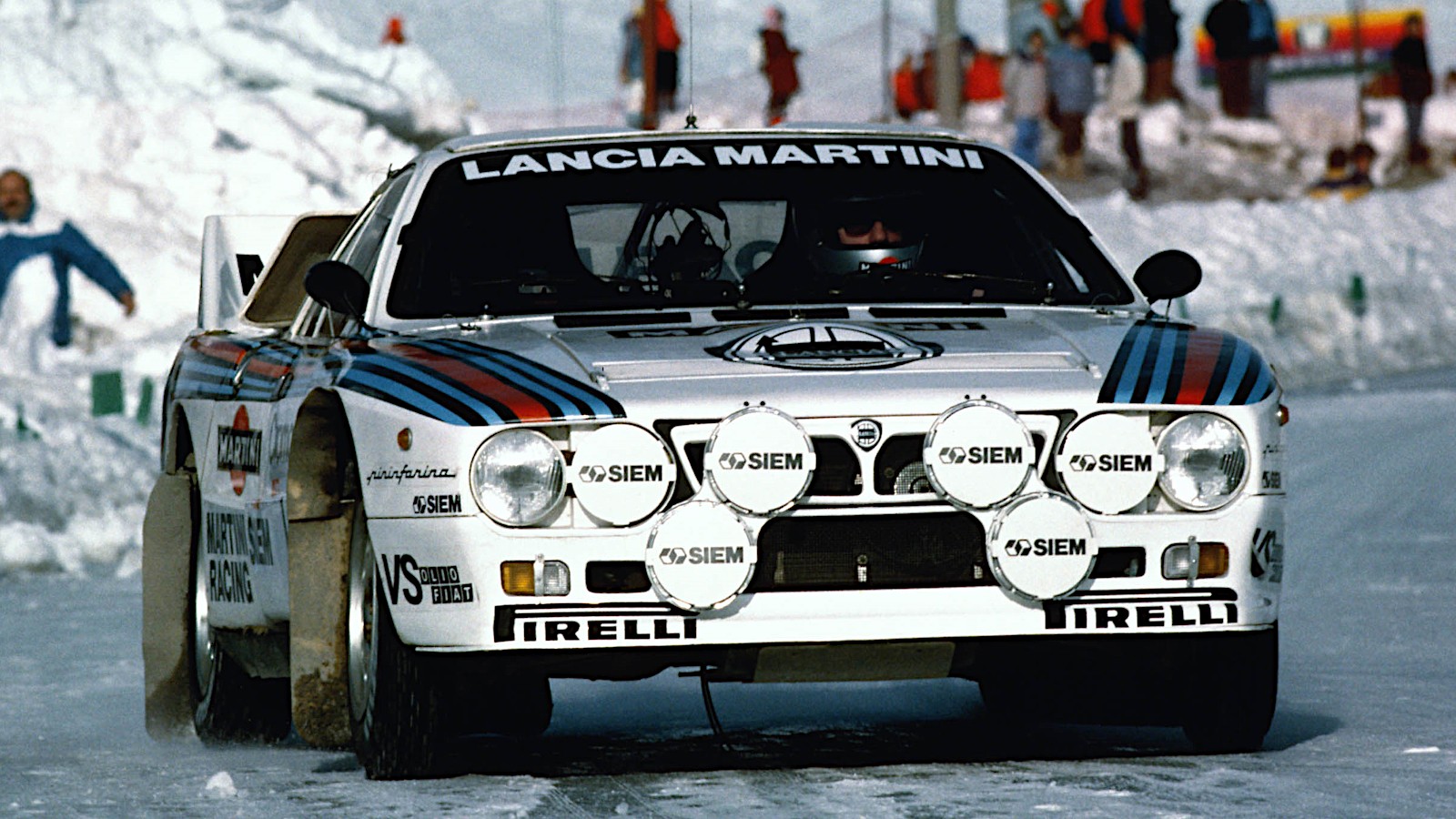
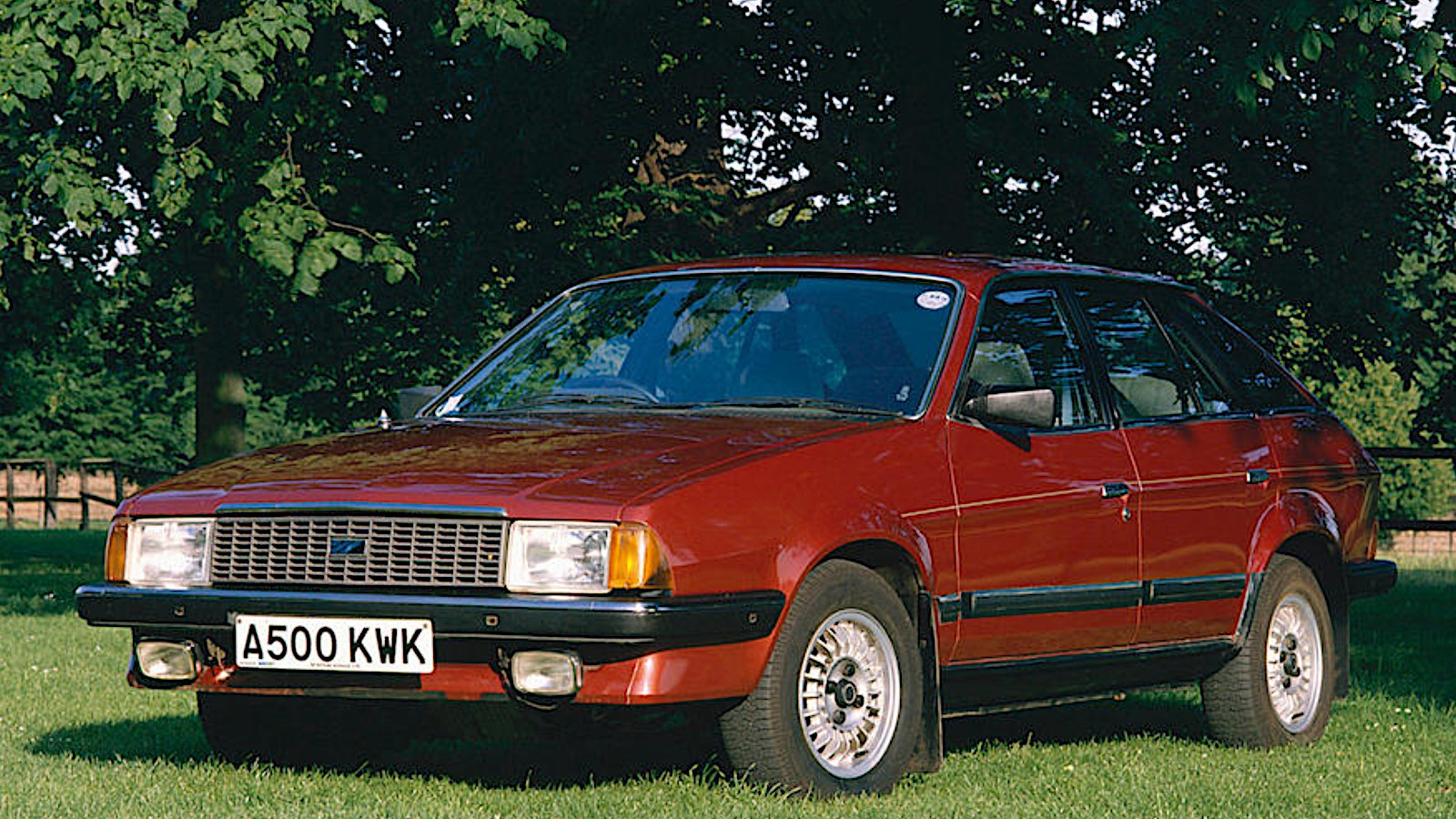
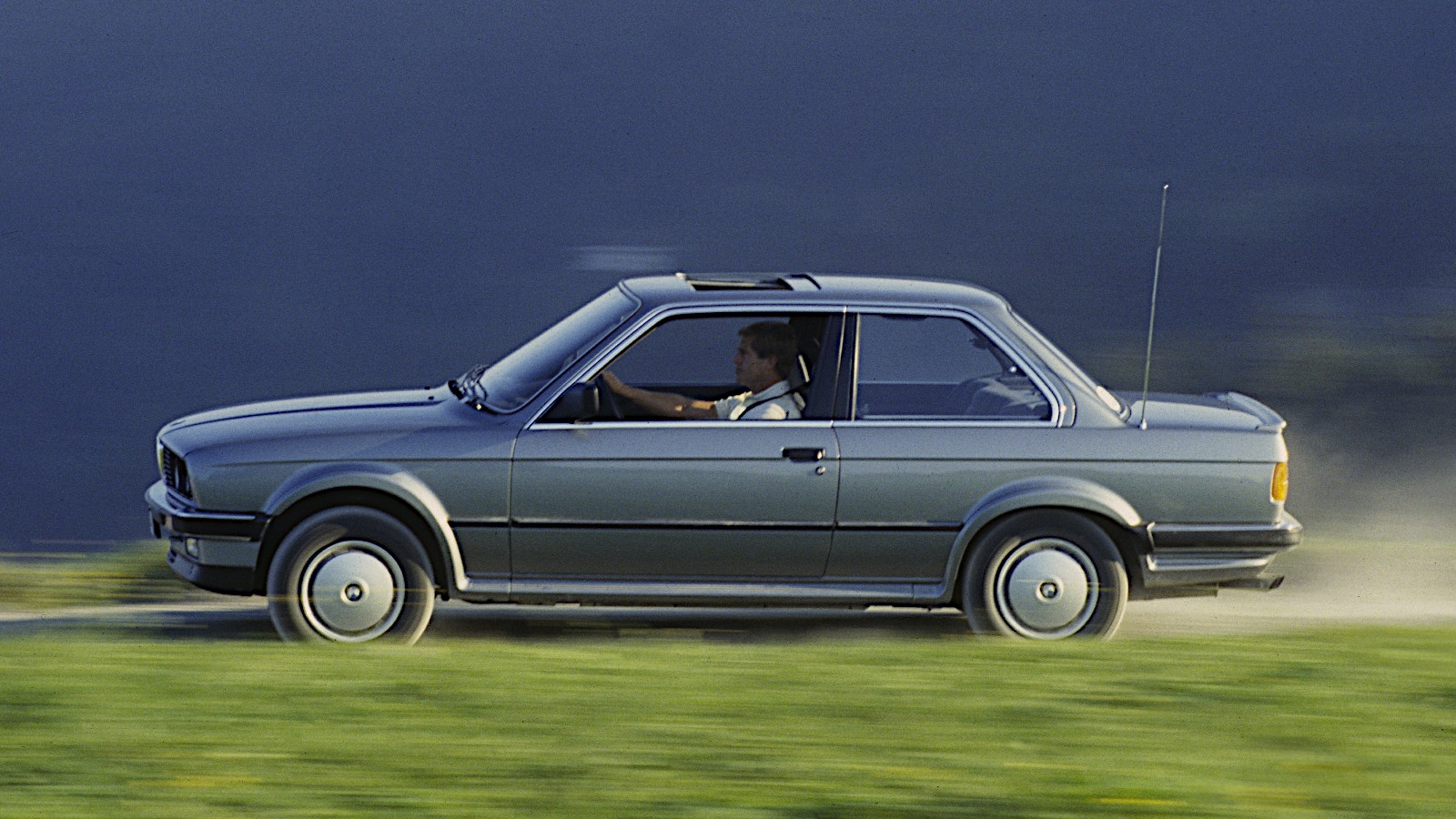

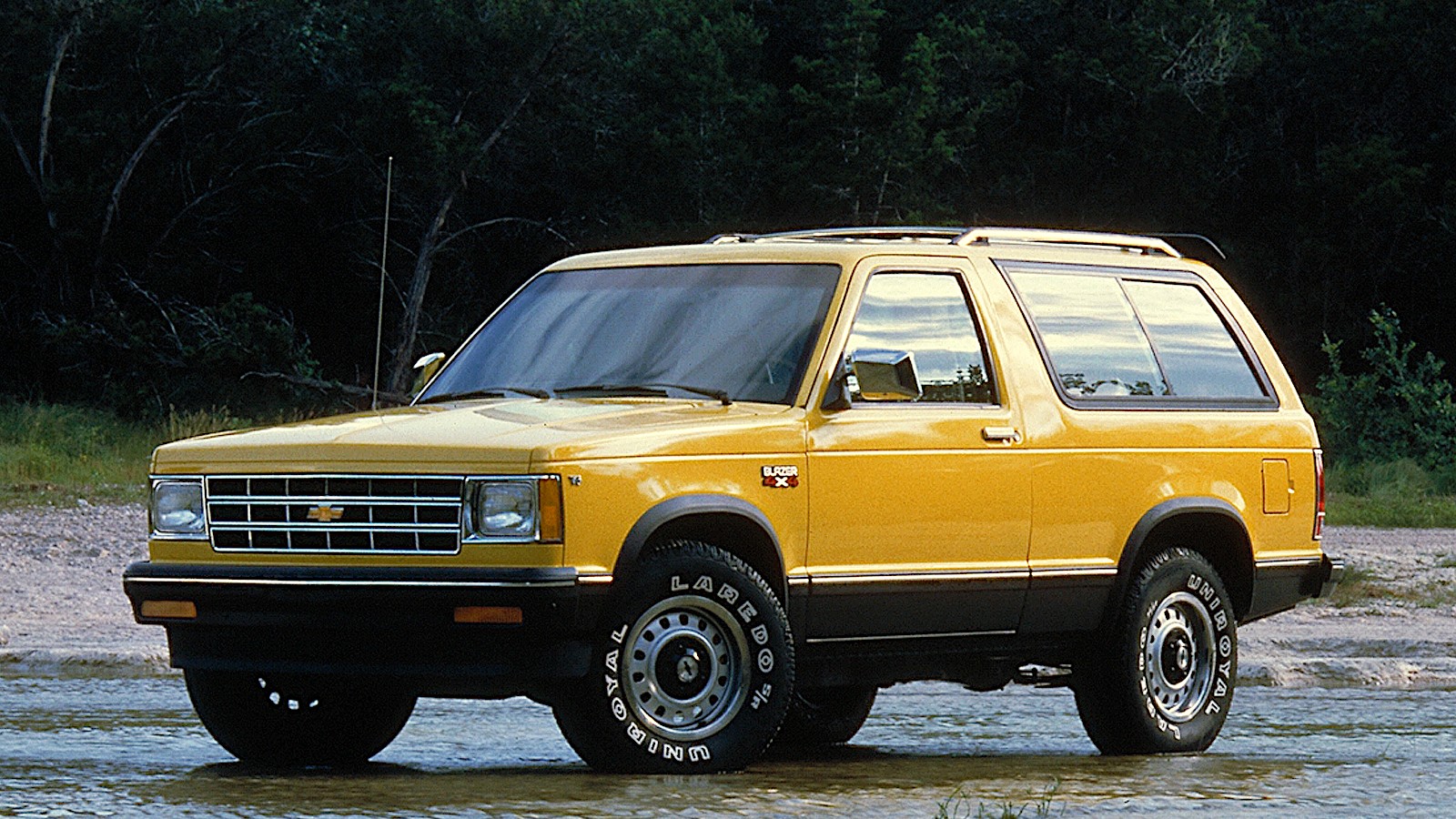
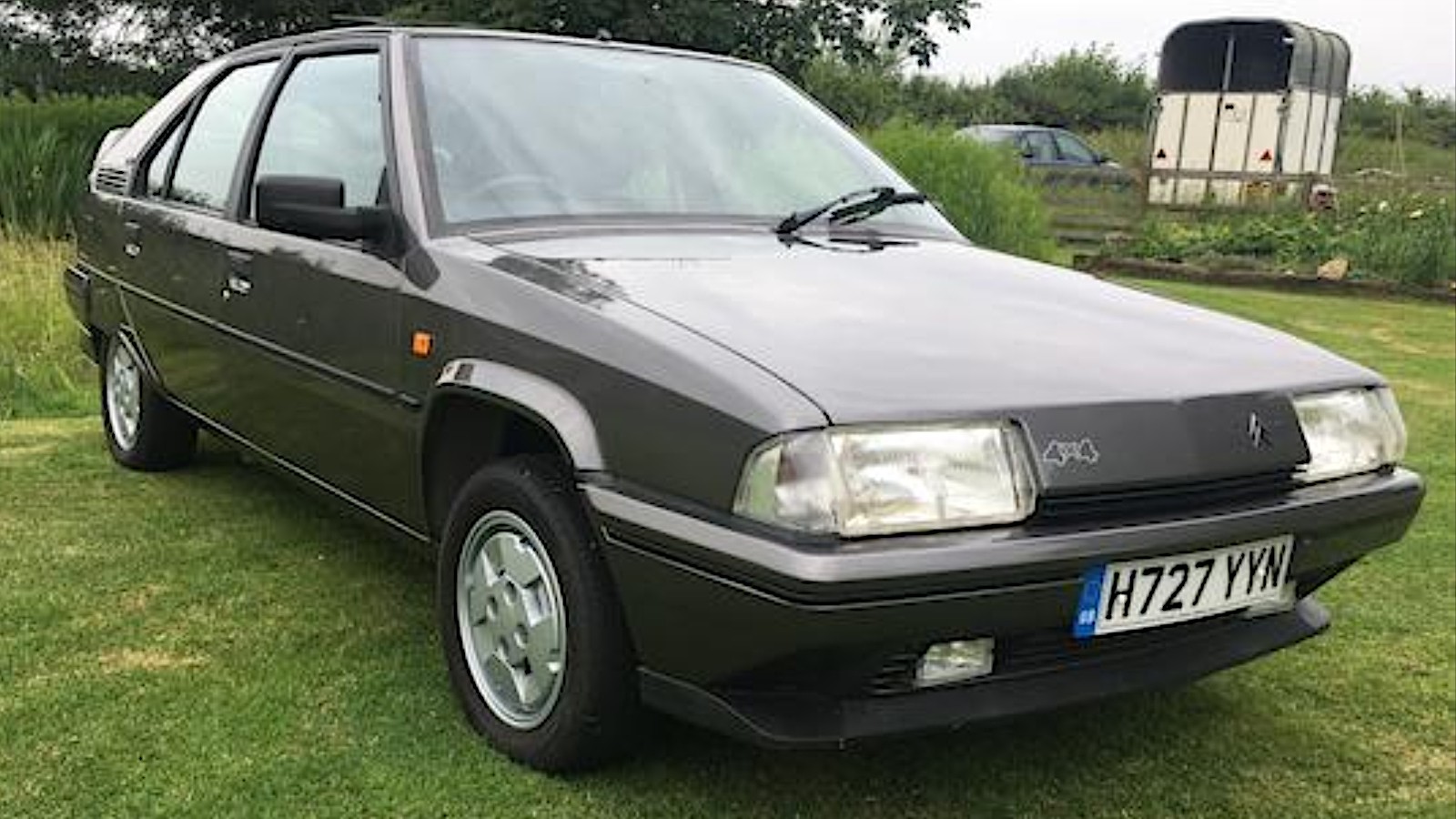

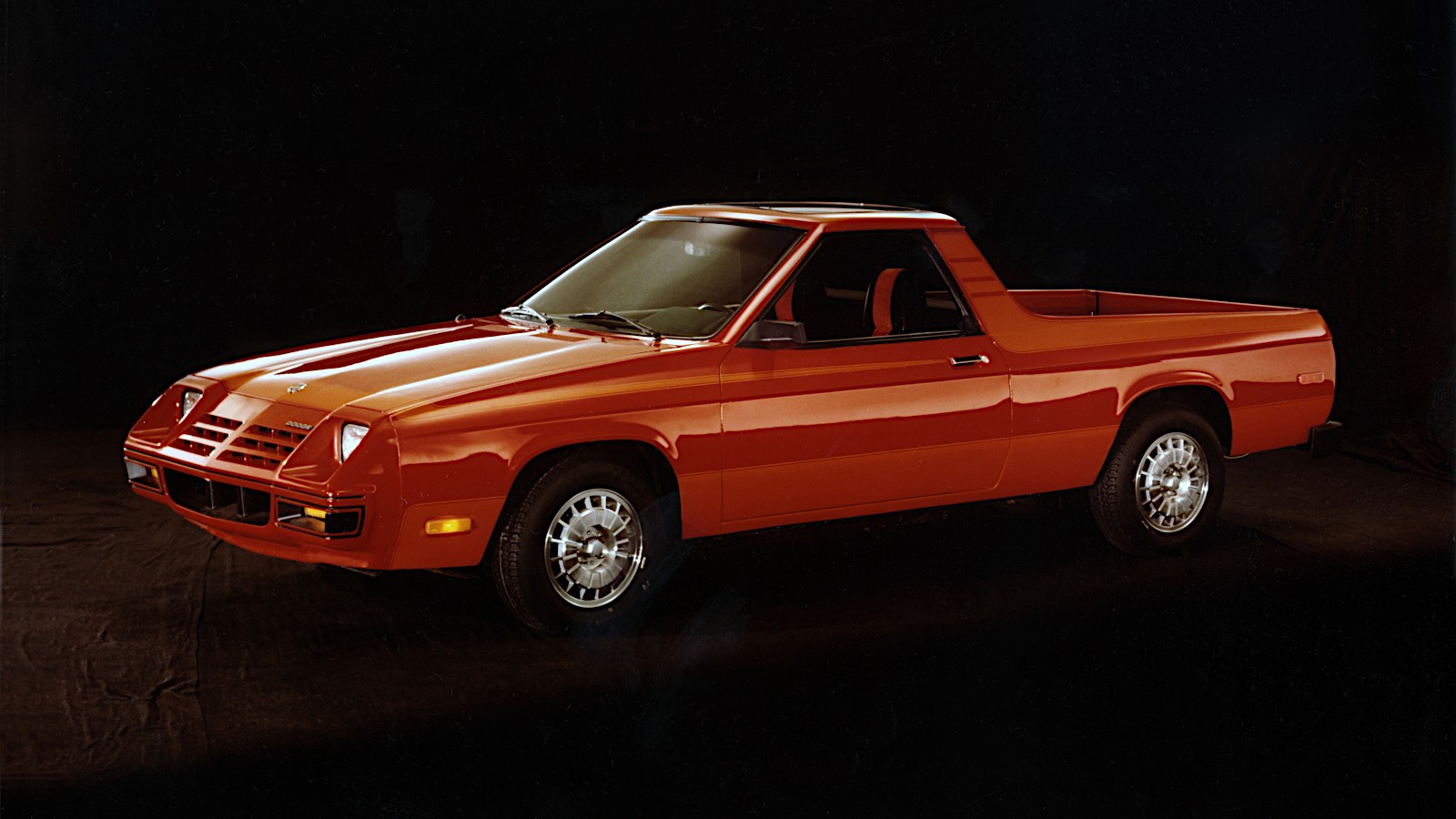

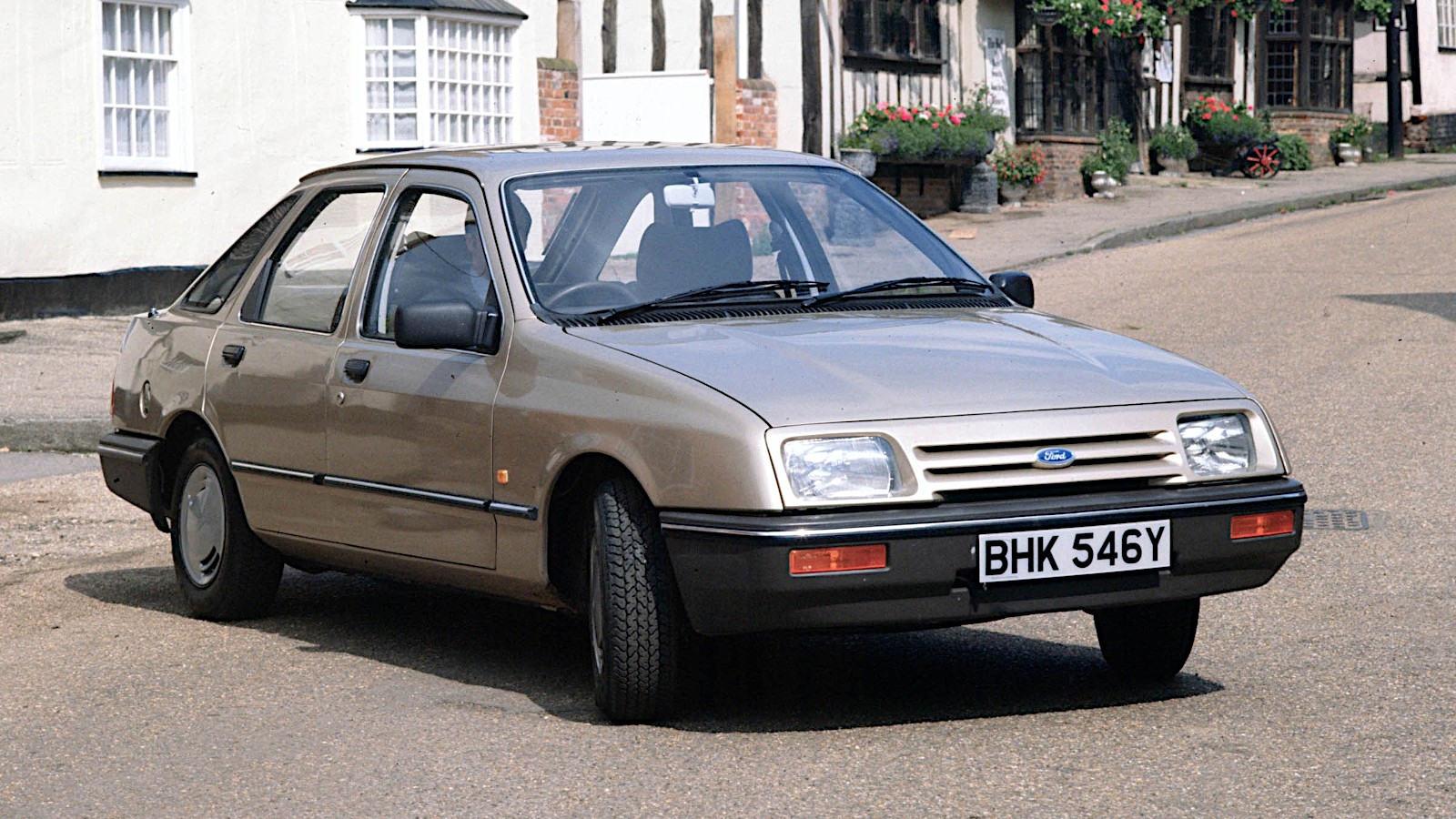
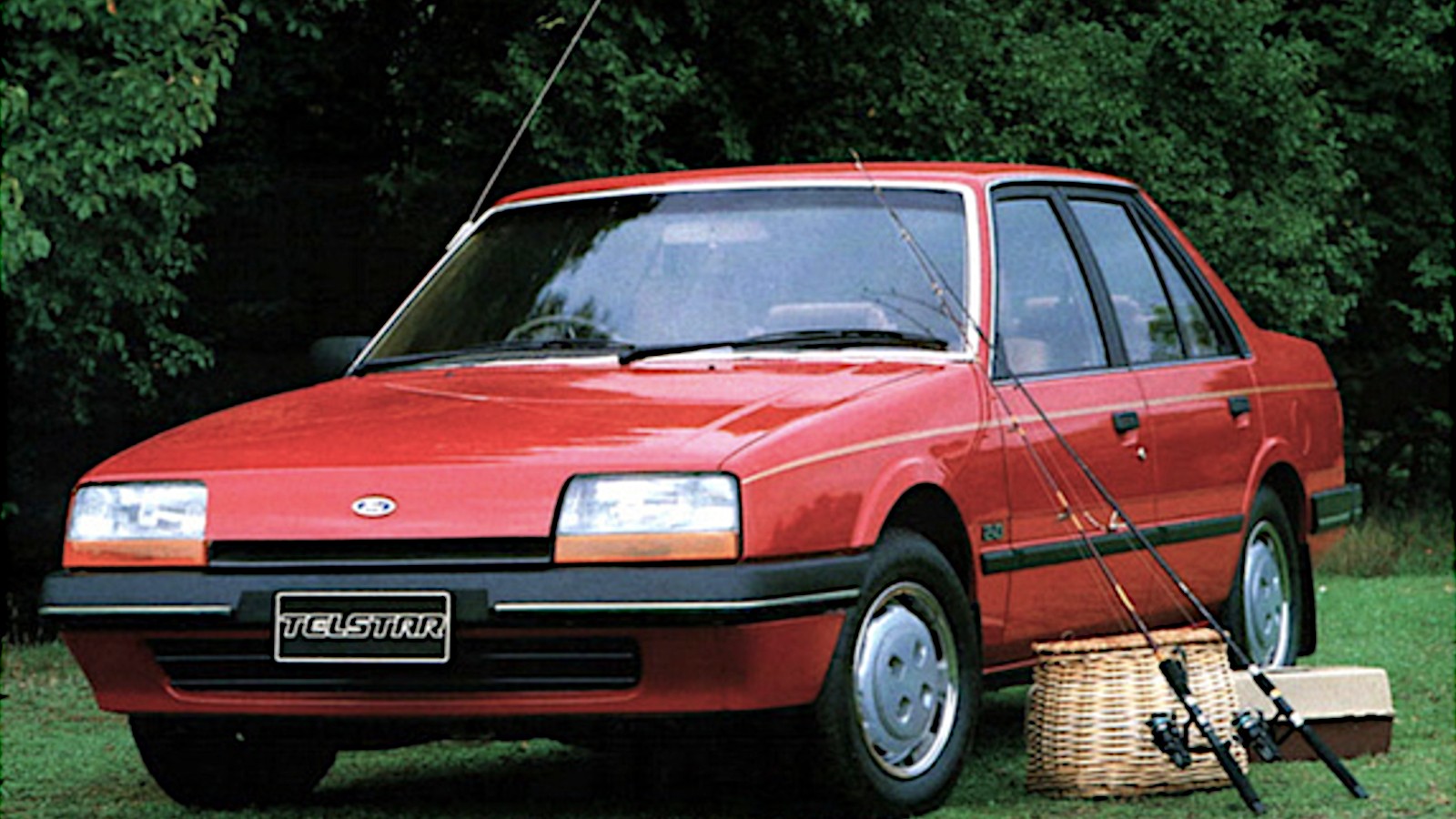
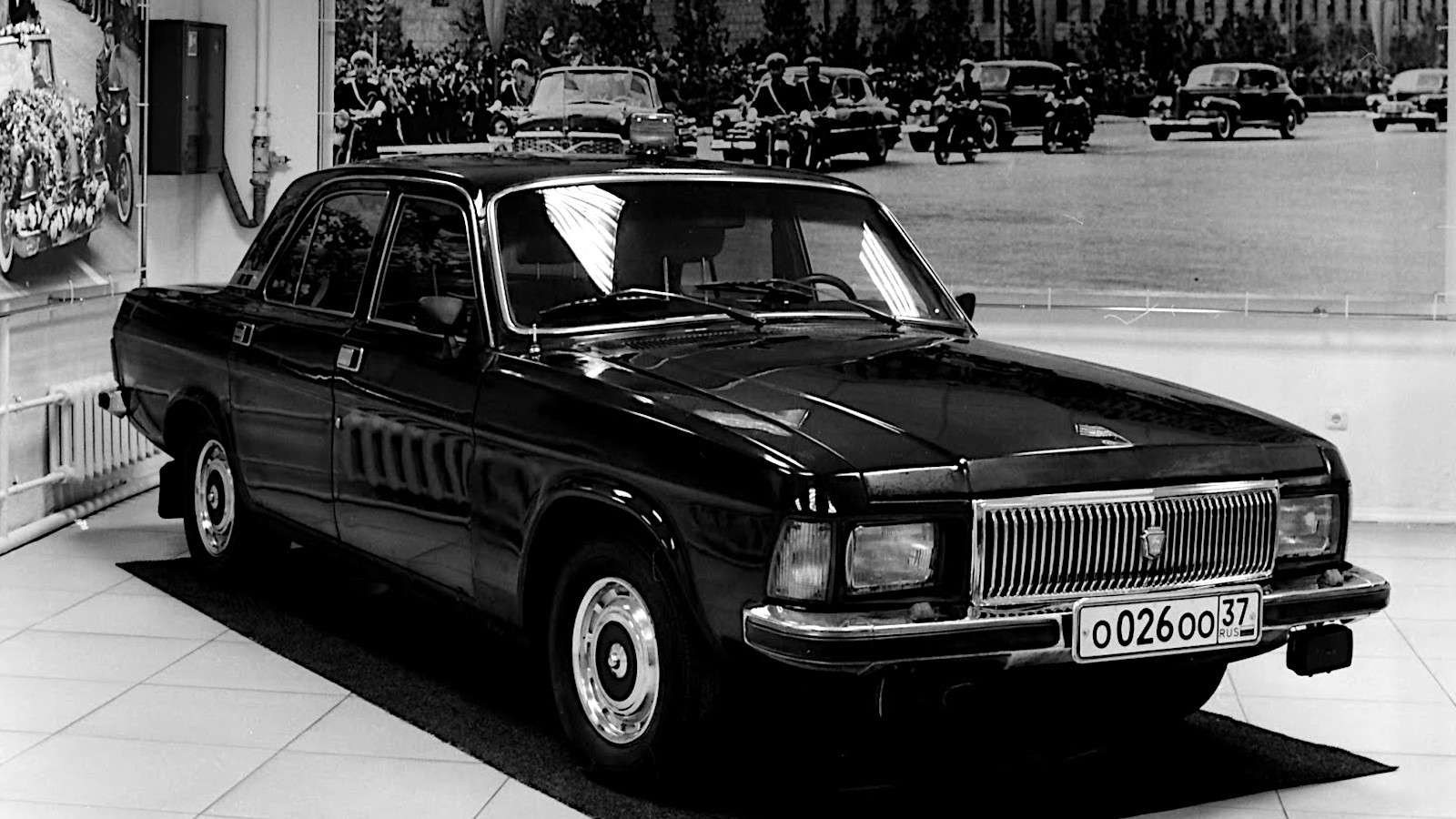
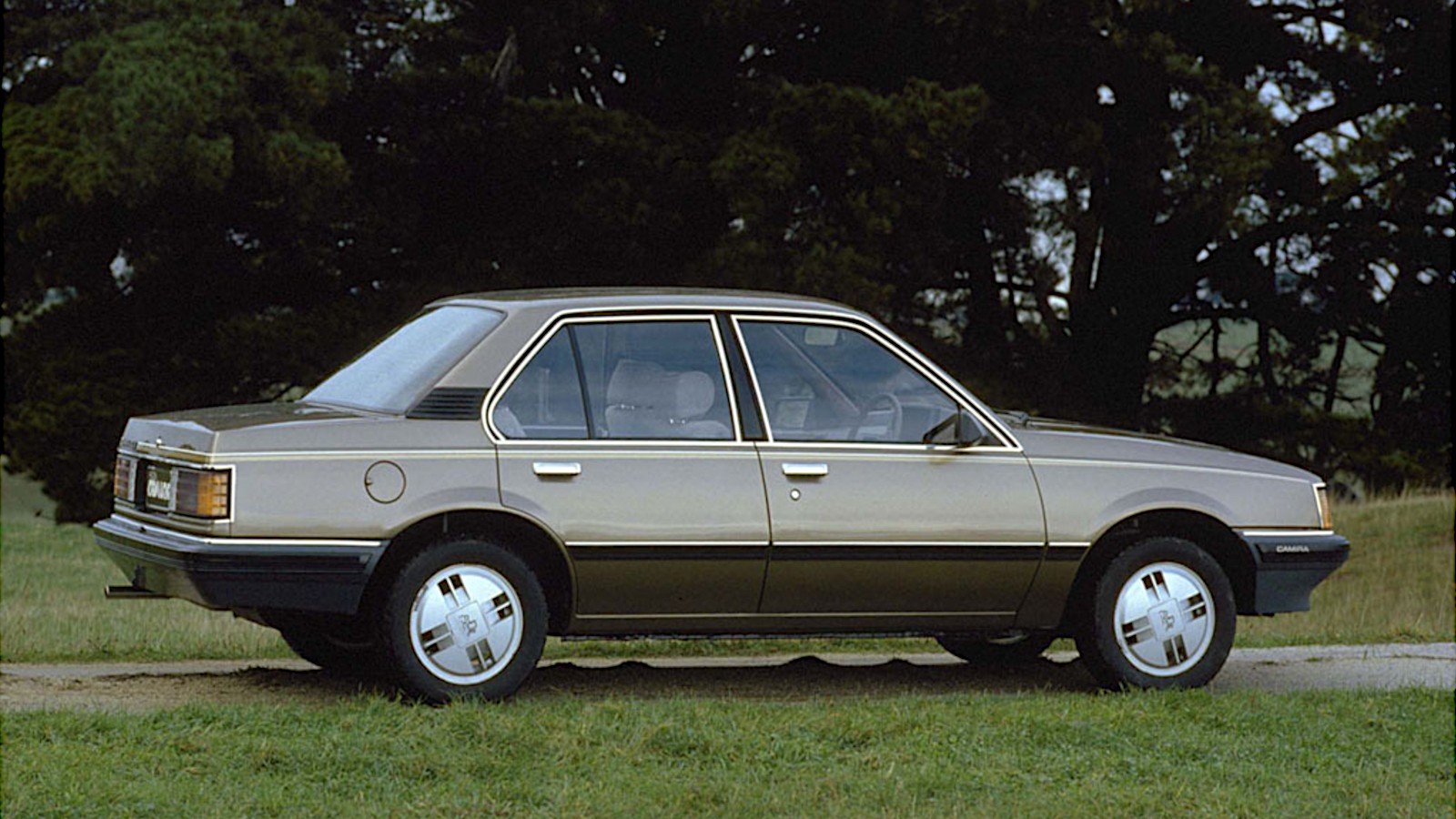

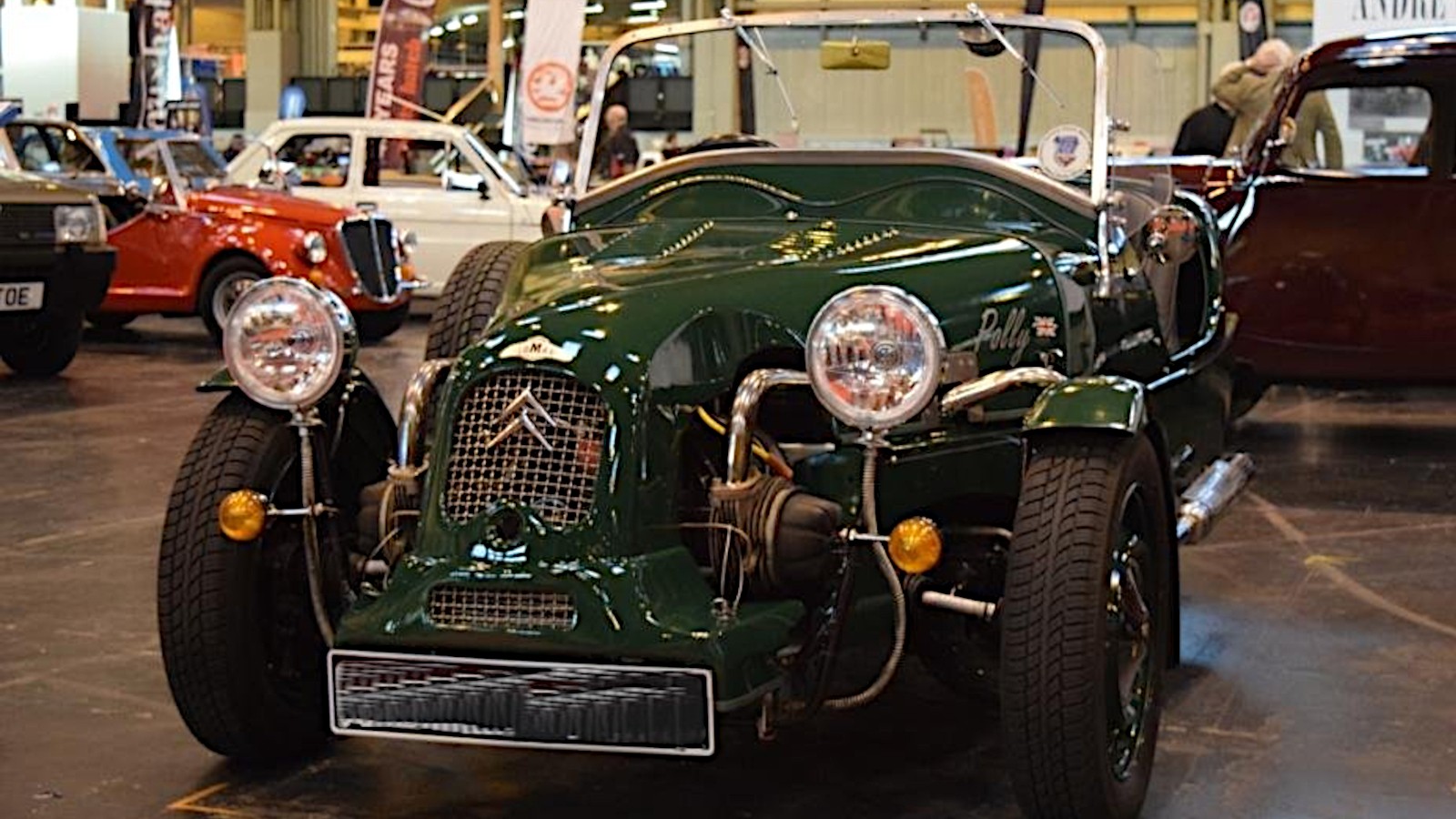
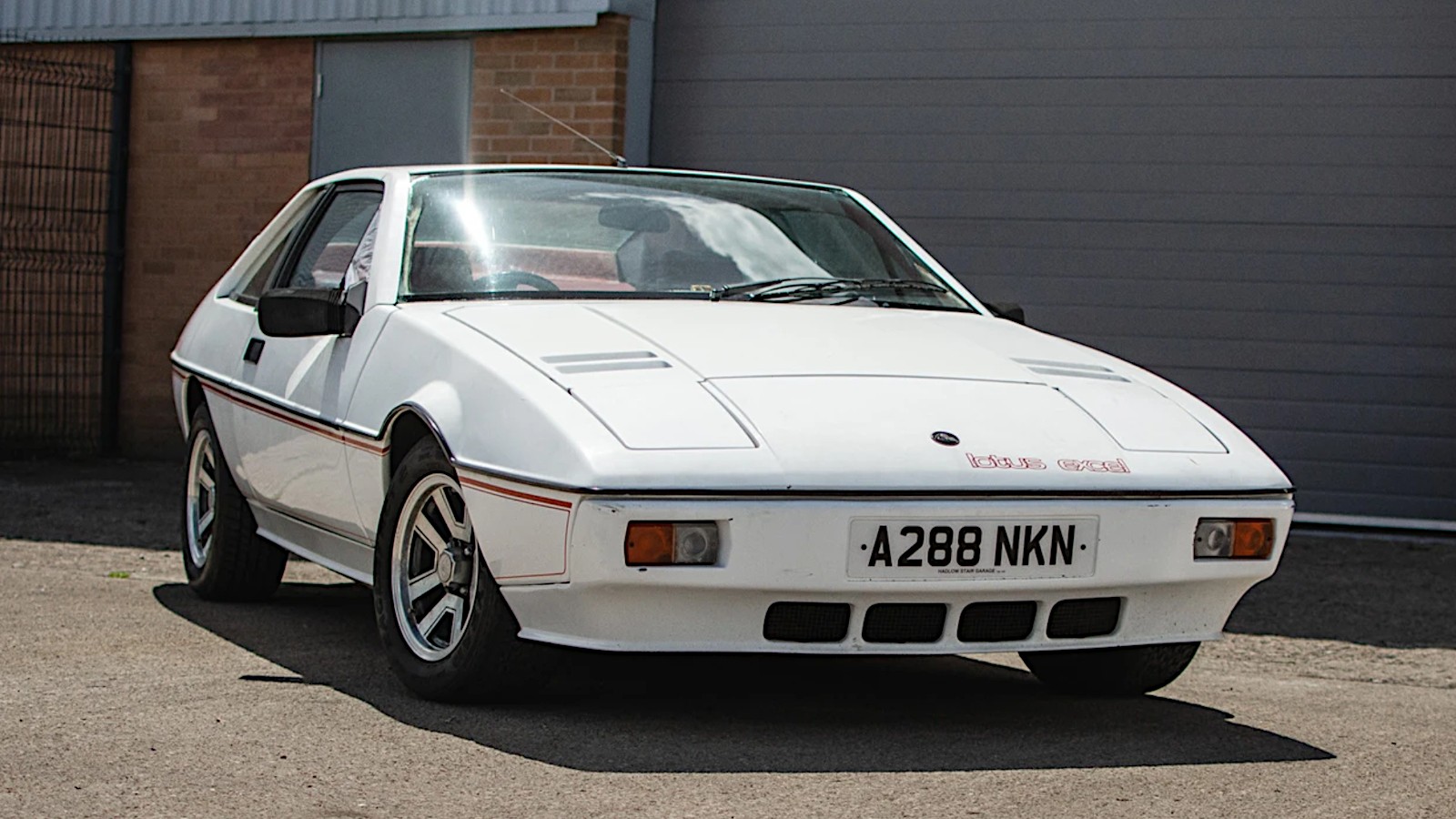
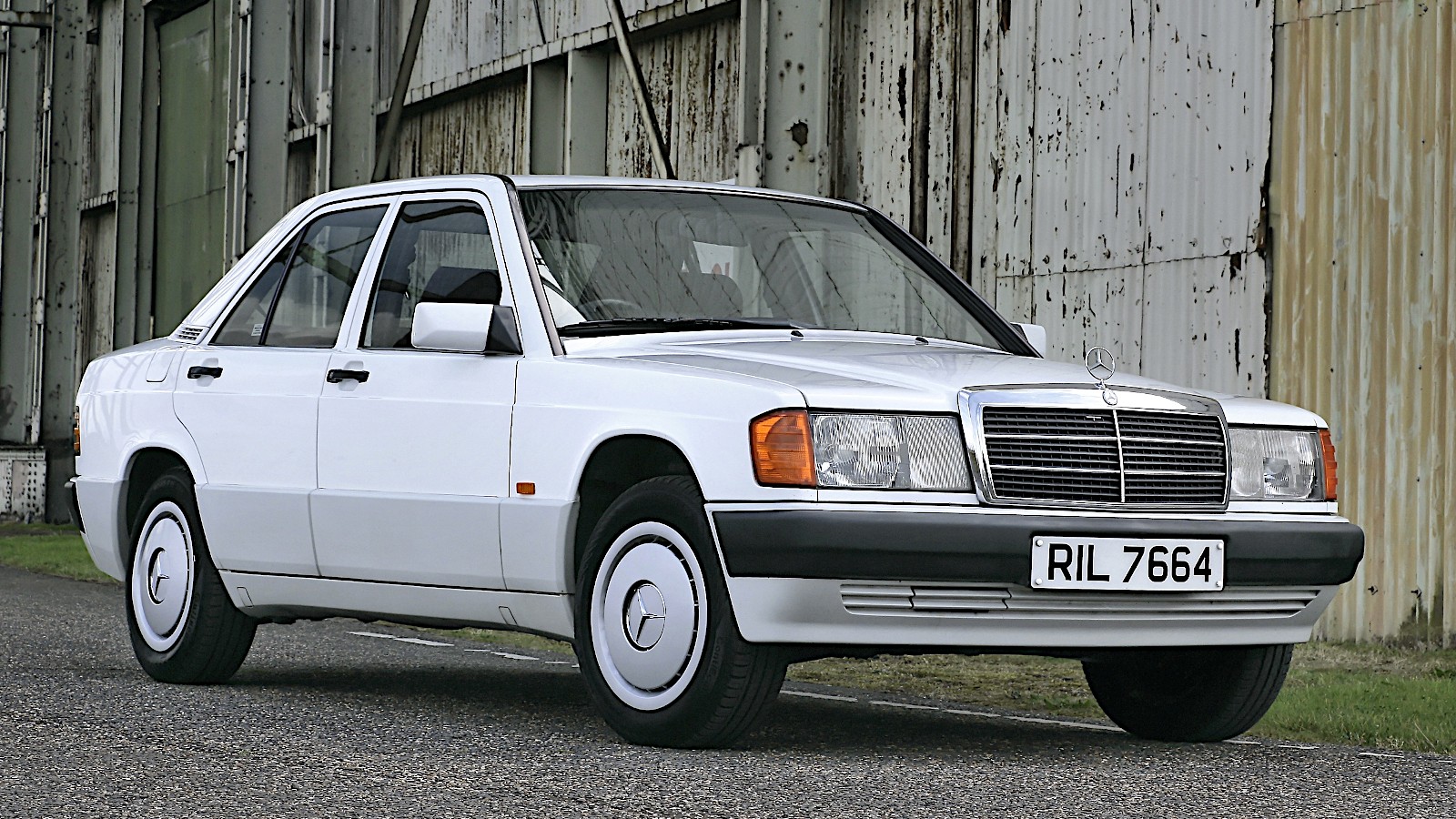

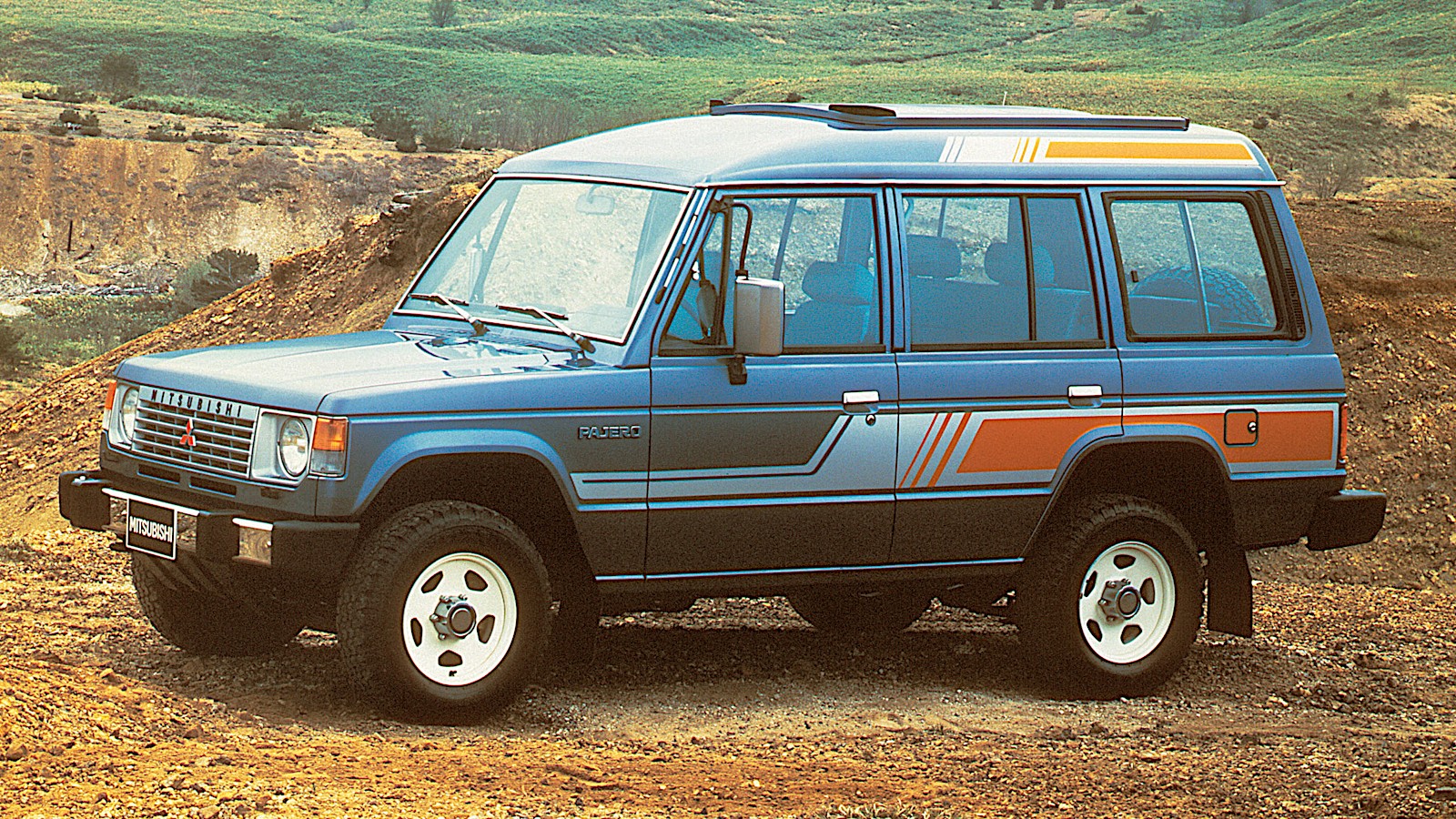
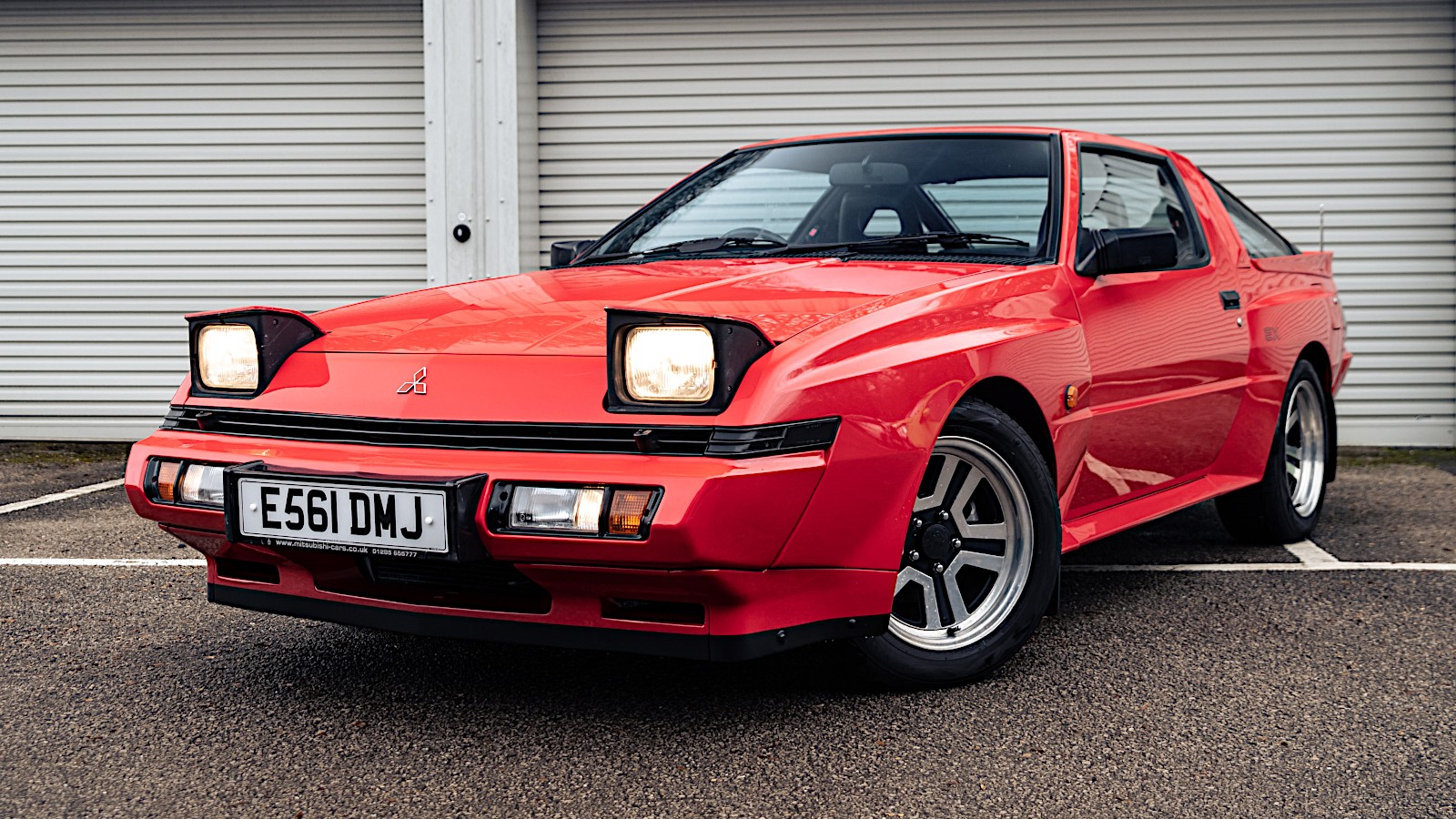
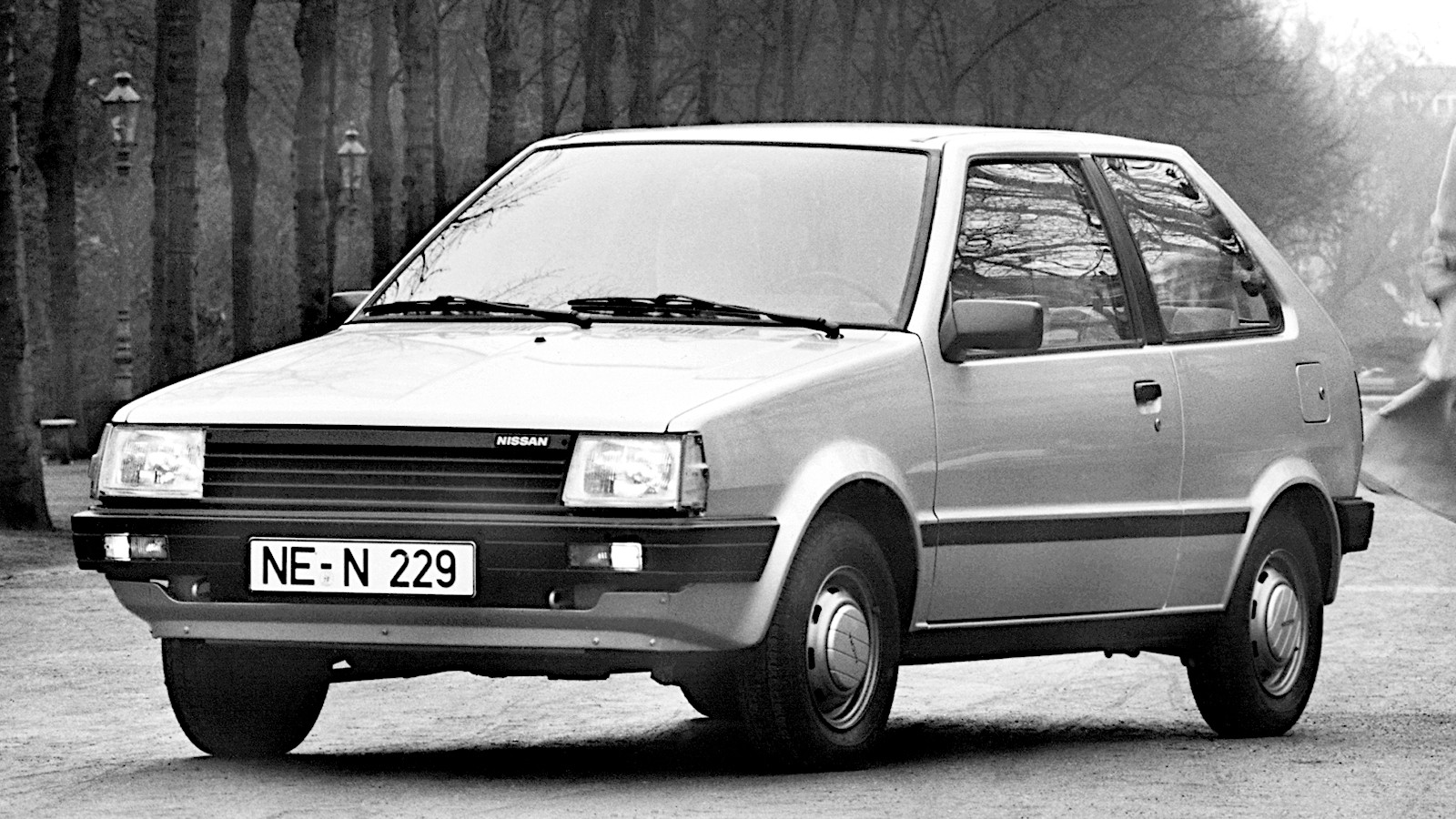
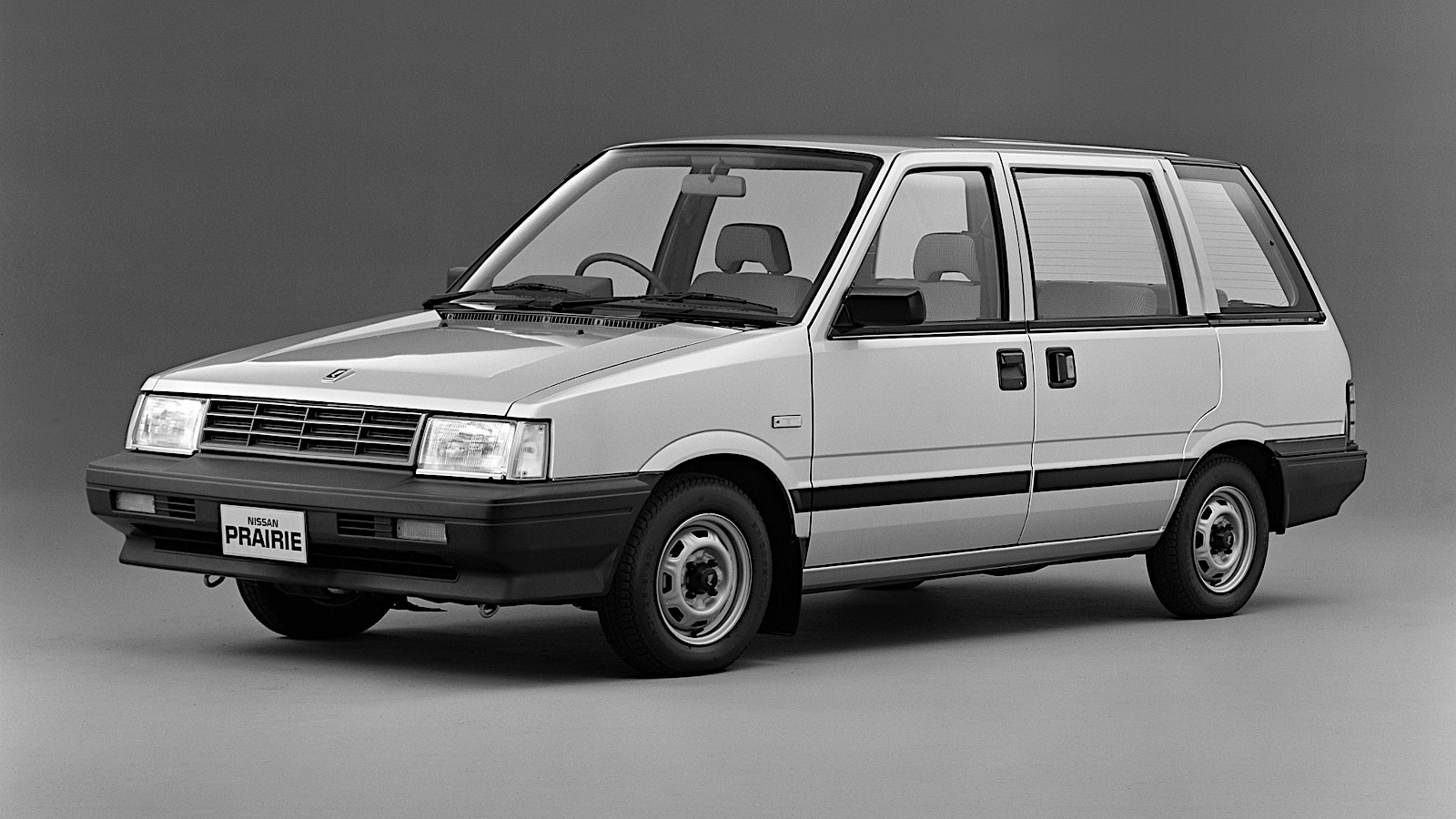
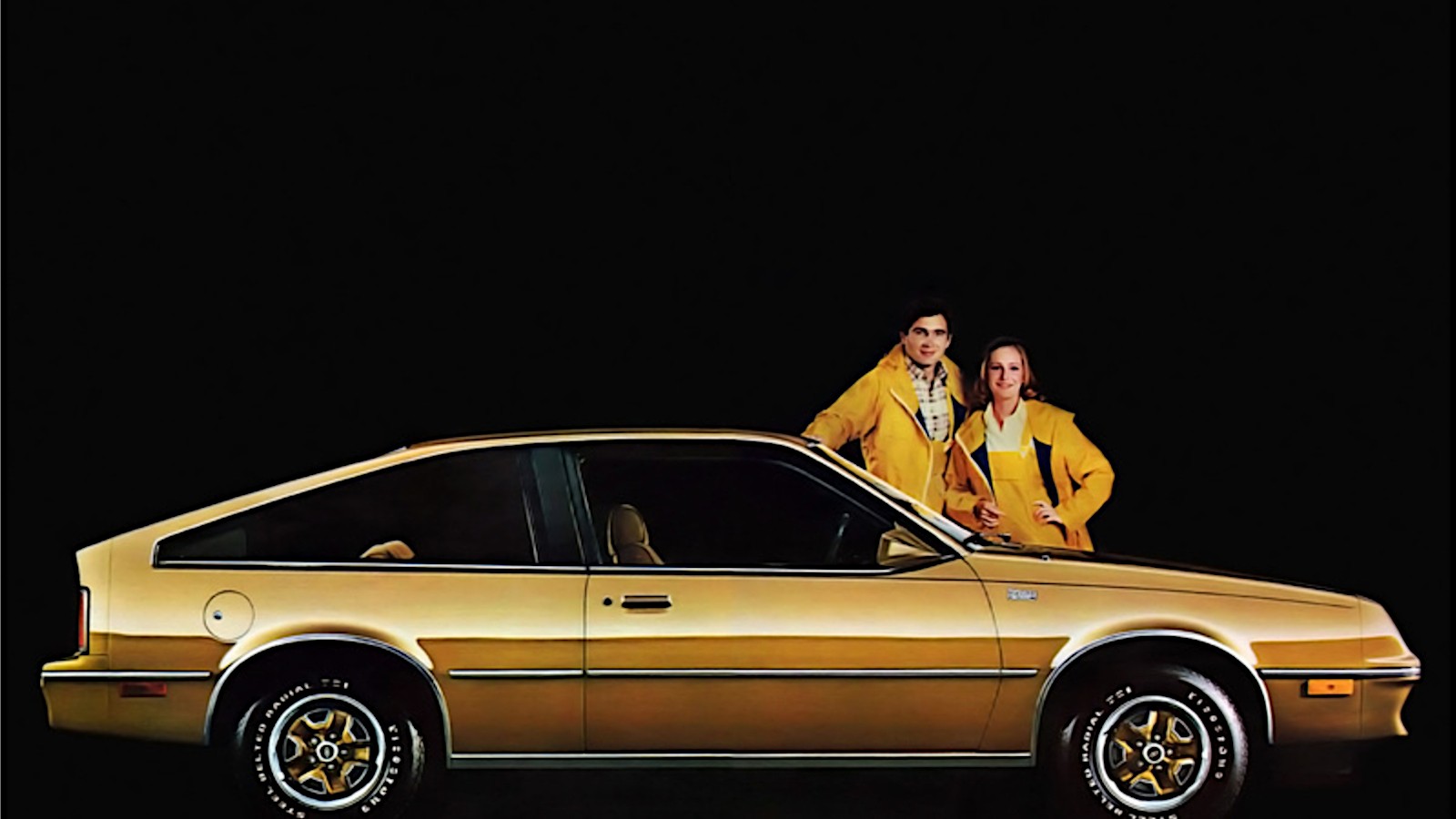
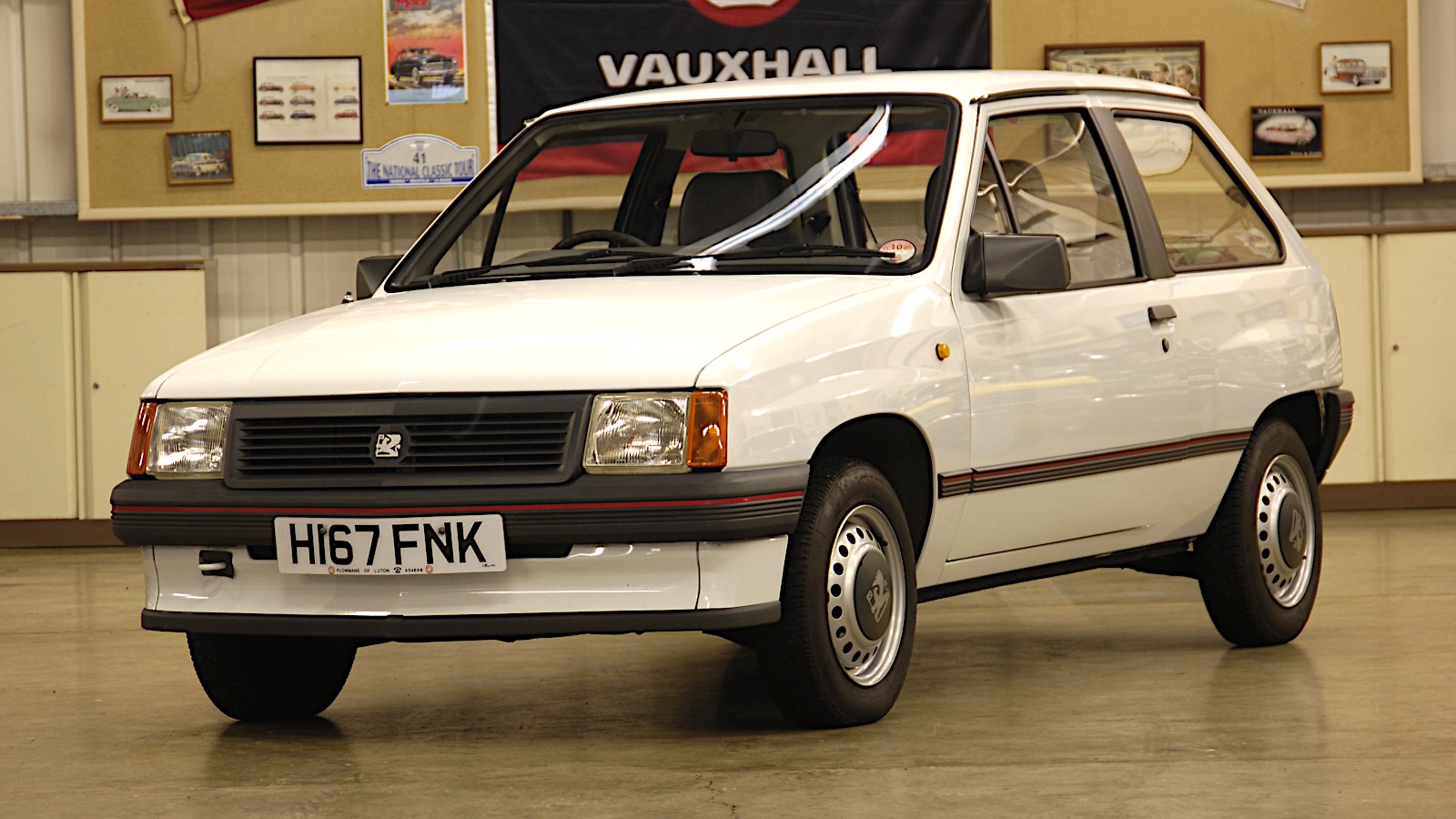
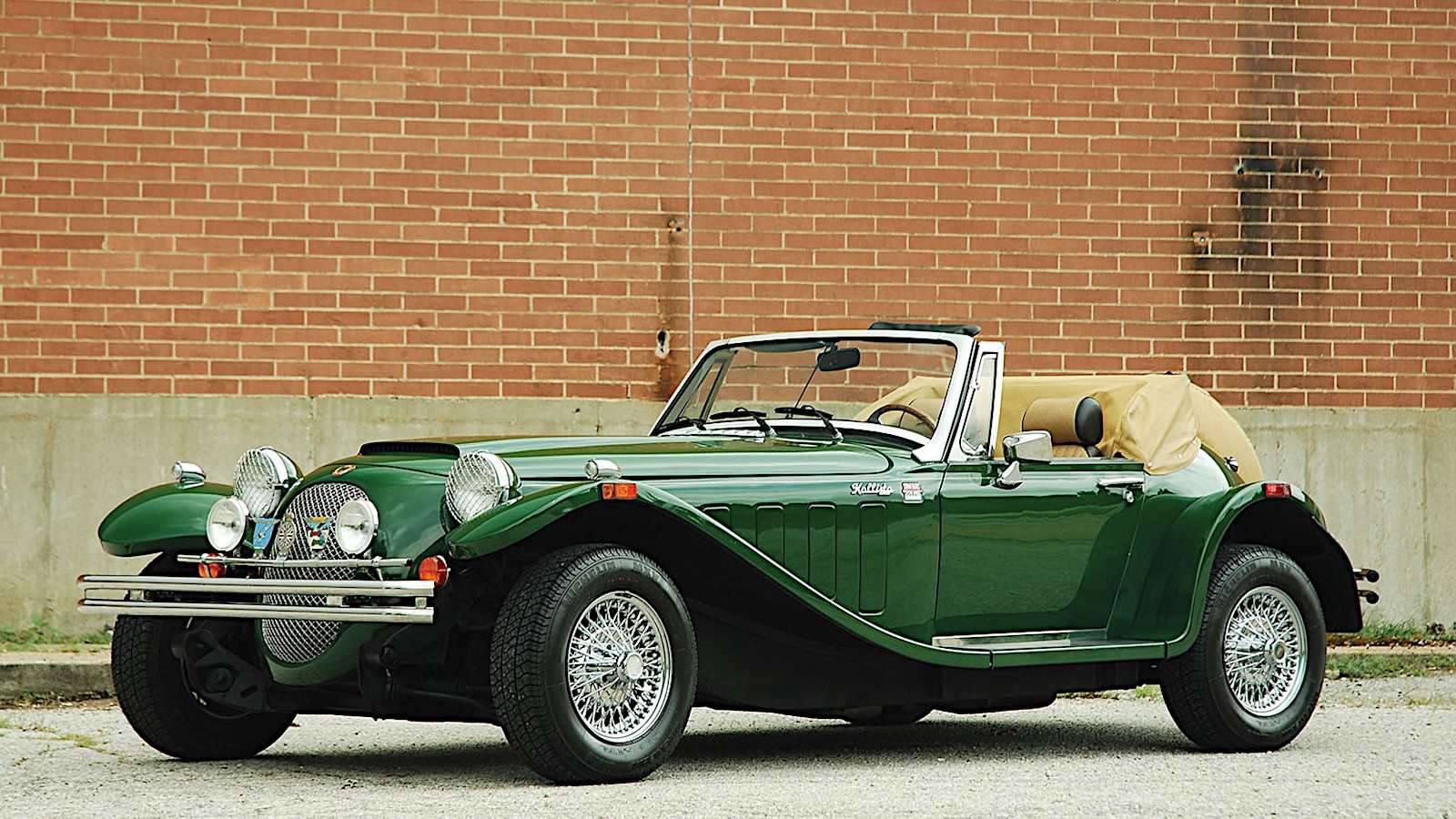

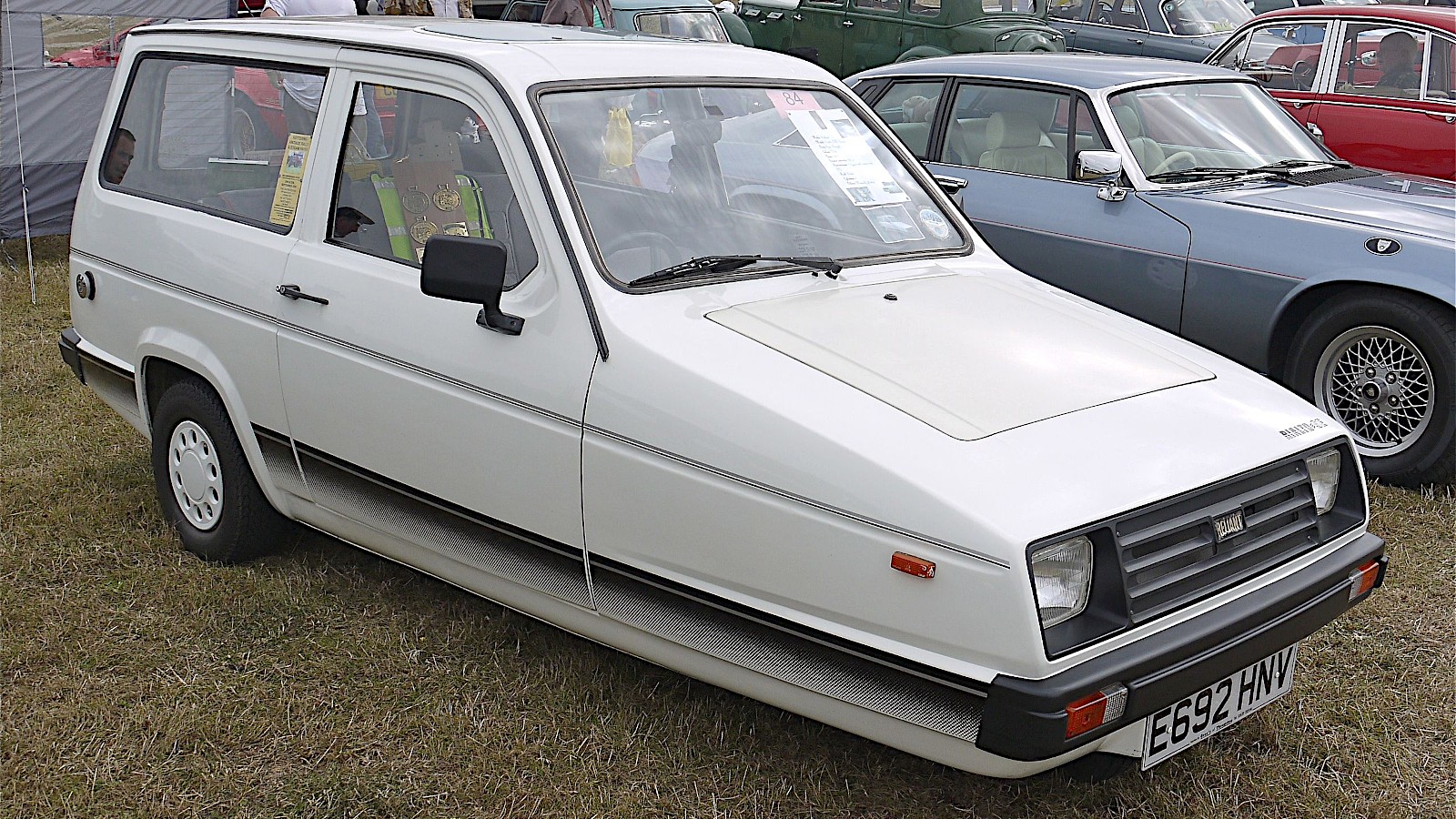
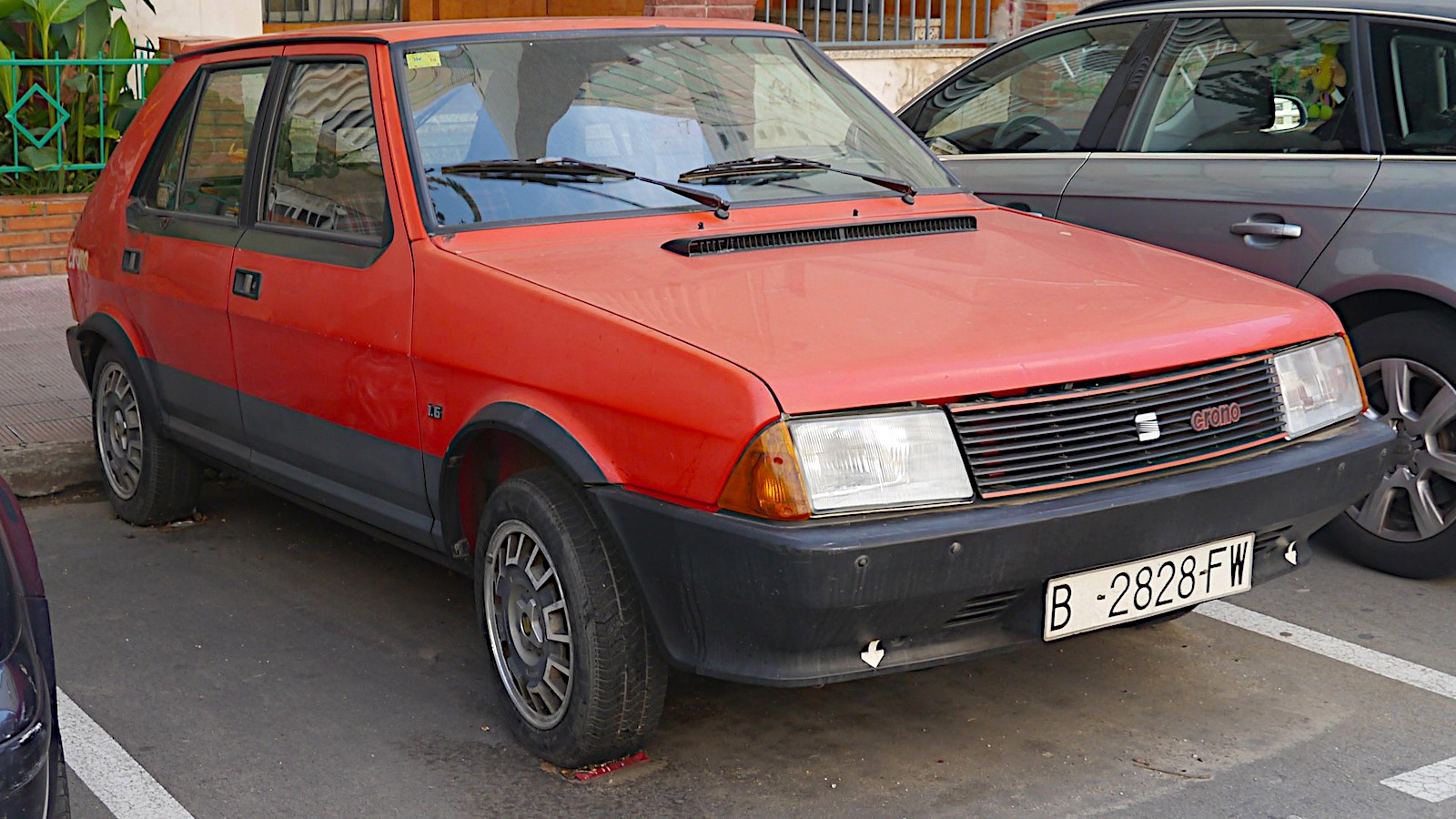



New cars of 40 years ago
By the end of 1982, car buyers around the world were being presented with a much wider choice than they’d had just 12 months earlier.
New models included everything from British kit cars to a Russian limousine, along with a wide variety of American and Japanese vehicles.
Four decades on, we take a look at the motoring introductions which temporarily drew our attention from other events that year, such as the Falklands War and the birth of Prince William.
1. Austin Ambassador
The Ambassador is first in our list alphabetically, but for no other reason.
It was a substantial update of the wedge-shaped 1975-1981 Princess, with an almost complete set of new body panels, more rounded styling, a hatchback and a small range of four-cylinder engines (the straight-six unit fitted to some versions of the Princess having been dropped).
The roomy interior was a plus point, but the Ambassador struggled in a world where buyers could choose more exciting rivals such as the new Ford Sierra and the second-generation Vauxhall Cavalier.
Production ended after just two years.
2. BMW 3 Series
Unlike later 3 Series, the second-generation model introduced in 1982 was conventional in a very ’80s sort of way, yet its designers still managed to make it look notably stylish.
BMW could not be faulted for offering its customers choice. Over the years, the 3 Series was available with four- and six-cylinder petrol engines, a six-cylinder diesel and a variety of body styles – two- and four-door saloon, convertible, and the smart but not especially practical Touring (estate). Some versions even had four-wheel drive.
The most exciting derivative was of course the M3, which was fantastic to drive in standard form and exceptionally successful in both rallying and circuit racing.
3. Chevrolet Celebrity
The Celebrity was Chevrolet’s replacement for the fourth-generation Malibu.
Unlike that car, it had front-wheel drive, a feature which was already common on very large GM cars such as the Buick Riviera, Cadillac Eldorado and Oldsmobilie Toronado, but not, until 1982, on medium-sized ones.
Powered by four-cylinder or V6 engines, and available with saloon, coupe and estate body styles, the Celebrity remained on sale for most of the decade, before giving way to the first-generation Lumina.
4. Chevrolet S-10 Blazer
The smaller of two Chevrolet SUVs bearing the Blazer name was based on the S-10 pick-up truck.
It was mostly powered by four-cylinder petrol engines of various sizes, though V6s were also available for owners who wanted more performance.
As it often does with Chevrolet trucks, the GMC brand produced its own version called the S-15 Jimmy. Late in the 12-year production run, Oldsmobile launched an upmarket derivative called the Bravada.
5. Citroën BX
The BX replaced Citroën’s GS, and had conventional inline four-cylinder engines, rather than the earlier car’s air-cooled flat-fours.
However, it also had hydropneumatic suspension with three-way adjustable ride height, a system most other manufacturers avoided.
There were several powerful derivatives, including GTIs with eight- and later 16-valve cylinder heads, as well as the dramatic turbocharged 4TC homologation special, which was converted into an unsuccessful World Rally Championship contender.
Perhaps the finest BXs, however, were the turbo diesels, which were highly praised for their combination of performance and fuel economy.
6. Dodge 600
The 600 was remarkably similar to the Chevrolet Celebrity mentioned previously, even though the companies behind them (Chrysler and General Motors respectively) were long-time rivals.
As well as looking much the same as each other, both cars had front-wheel drive, and were available with saloon and coupe body styles.
But there were differences. There was no estate version of the 600, but there was a convertible. And although Dodge only ever fitted the car with four-cylinder engines, one of them was turbocharged, a feature never found in the Chevrolet.
The 600 was introduced for the 1983 model year, but around 5000 (about a tenth of the usual annual total) were sold before 1982 was out.
7. Dodge Rampage
Quite an oddity, this one. The Rampage was a pick-up derivative of the Dodge 024, which was itself the coupe version of the Dodge Omni, also marketed in North America as the Plymouth Horizon.
In Europe, the Omni was known as the Chrysler (and Simca, and later Talbot) Horizon, and is best remembered for winning the Car of the Year award in 1979.
To add to the confusion, the Rampage was also marketed by another Chrysler brand as the Plymouth Scamp.
After that resounding introduction, it would be nice to be able to report that the project was a success, but no. Fewer than 40,000 Rampages and Scamps were built in three years, before Chrysler abandoned the whole idea.
8. Ford Ranger
The Ranger was the first compact pick-up truck Ford designed for North American markets, though the company had previously marketed the third-generation Mazda B-Series as the Ford Courier.
Ford fitted the Ranger with its own four-cylinder and V6 petrol engines, and with 2.2- and 2.3-litre diesels supplied by Perkins and Mitsubishi respectively.
The least powerful petrol unit was nominally a 2.0-litre Pinto, but there’s a twist. Instead of the 1993cc unit used in European cars, the Ranger had a narrow-bore version of the normally 2.3-litre, Pinto-derived Lima.
Measuring 1990cc, this is one of the rarest engines in the Pinto family.
9. Ford Sierra
The Sierra was at first greeted with alarm due to its odd appearance, which quickly led to it being nicknamed the ‘jelly mould’.
It became very popular all the same, though it never achieved the same feat, as all but the first generation of Cortina did, of being the most registered car on sale in the UK according to the Society of Motor Manufacturers and Traders.
Production lasted for 11 years, during which time Ford built hatchbacks, estates, saloons (marketed as Sapphires), a pick-up version known as the P100 and, of course, the mighty RS Cosworth and RS500.
In a small way, it lived on even after being replaced by the Mondeo. The Escort RS Cosworth, built until 1996, was based on the Sierra floorpan.
10. Ford Telstar
Unknown in Europe or the Americas, the Telstar was a medium-sized car aimed at the African, Asian and Australasian markets.
There was very little of Ford about the car. It was a rebadged version of the third-generation Mazda known in Japan as the Capella and elsewhere as the 626.
This made sense because Ford was a shareholder in Mazda at the time, and the two manufacturers often collaborated on projects.
In this particular case, the principle was applied for several more years, until the fifth-generation Telstar was discontinued at the end of the 1990s.
11. GAZ-3102
The GAZ-3102 was a large Russian saloon almost never seen outside its home country.
Usually powered by a four-cylinder petrol engine, but occasionally by a large V8, it remained in production for nearly three decades before GAZ’s Swedish then-President Bo Andersson called a halt as part of his attempt to make the company profitable.
12. Holden Camira
In the early 1980s, General Motors began producing a remarkable number of cars based on a platform known as J-body.
These included the Opel Ascona and its British counterpart, the second-generation Vauxhall Cavalier, as well as similar vehicles from GM’s North and South American brands, and South Korean Daewoo.
The Australian version was the Holden Camira, which quickly developed a reputation for unreliability in several areas, including engine overheating.
Production lasted for seven years, during which time the Camira was updated twice and finally became acceptably reliable.
13. Lancia 037
The 037 existed as a road car for no other reason than to allow Lancia to run a competition version in the World Rally Championship.
Even wilder than the Stratos it replaced, the 037 was derived from the Montecarlo coupé, and had a supercharged 2.0-litre engine.
That engine drove only the rear wheels, which put the car at a disadvantage to four-wheel drive rivals in competition.
Despite that, it won six WRC rounds, and gave Lancia first, second, third and second positions in the Manufacturers’ Championship from 1983 to 1986.
14. Lomax
It is now 40 years since the British company Lomax began producing kits for glassfibre-bodied sports cars which owners would complete using the engine, transmission, floor, suspension and wheels of the Citroën 2CV.
Perhaps the most famous model was the 223, so named because it had two cylinders, two seats and three wheels. Now you know that, it won’t be difficult to guess the layout of the 224.
The 424 was similar, but powered by the air-cooled engine (of 1.0 to 1.3 litres) fitted to, among other things, the Citroën GS.
After several changes of ownership, including a recent one, Lomax is still in operation. Its current range consists of the 223, the 224, the Lambda (essentially the same as the others but with rounder bodywork) and the retro-styled, four-wheeled Supertourer.
15. Lotus Excel
The Excel was an update of the 1975 Lotus Éclat, which was itself derived from the previous year’s second-generation Elite.
Lotus continued to use its own 2.2-litre 16-valve engine, but many of the other components, including the five-speed manual gearbox, were supplied by Toyota.
A more visible change was the softening of the Elite’s body styling. Oliver Winterbottom’s original wedge-shaped designs for the Elite and Éclat had been fashionable when those cars were launched, but were starting to feel a little out of date by 1982.
16. Mercedes-Benz 190
Known to Mercedes-Benz employees and enthusiasts as the W201, the 190 was the immediate predecessor of the first C-Class.
In most forms, the 190 was a suitable car for families and taxi drivers, but there were also performance derivatives.
Mercedes itself created several versions (including two Evolutions) of the 190E, which had a 16-valve cylinder head supplied by Cosworth. AMG, meanwhile, developed a 3.2-litre straight-six engine for the normally four-cylinder car.
Famously, a race held at the Nürburgring in 1984 for Grand Prix drivers in lightly modified 190Es was won by Ayrton Senna, who had competed in his first Formula One event only seven weeks earlier. Mercedes still owns the car he drove.
17. Mitsubishi Cordia and Tredia
The front-wheel drive Cordia saloon and its hatchback equivalent, the Tredia, were less notable than other Mitsubishis launched in 1982, but they had their moments.
Both were available with turbocharged engines, though these were not the norm for either range.
They could also be specified with a gearbox called Super Shift, which had four forward gears, and a separate lever for selecting low and high ratios (known as Power and Economy respectively).
This gave eight forward gears in total, but going through all of them in sequence was a complicated process, so owners tended not to bother.
18. Mitsubishi Pajero
Known as the Shogun in the UK and the Montero in some other markets, the Pajero was, unlike most current SUVs, as serious an off-roader as you could hope to buy.
In its first generation it was available with three- and five-door body styles, and a wide range of petrol and diesel engines with capacities of between 2.0 and 3.0 litres.
An Evolution version won the Dakar Rally in 1985. Later models would raise the total to 12 by 2007.
The Pajero continued through four generations until it was discontinued in 2021.
19. Mitsubishi Starion
Almost as different from the Pajero as could be imagined, the Starion launched in the same year was one of many sports coupés produced by Japanese manufacturers during the period.
Depending on the market, the engine was a four-cylinder unit measuring either 2.0 or 2.6 litres, and turbocharged in each case.
The car was sold in North America by the Chrysler, Dodge and Plymouth brands with the model name Conquest.
20. Nissan Micra
Today’s Micra is the fifth in a series of small Nissan hatchbacks which began in 1982.
The original model was sometimes scoffed at in the UK, but it was economical, reliable and exceptionally easy to drive. There are people who like that sort of thing.
During its 10-year run, Nissan produced the Super Turbo, so named because its 1.0-litre engine was boosted by both a supercharger and a turbocharger.
With a 0-62mph time of just 7.7 secs, it was, to say the least, an outlier in the Micra line-up.
21. Nissan Prairie
The shape of the Prairie made Nissan’s intention very clear: provide as much interior space as possible in a 4.3-metre long car.
Though far from an exciting vehicle, the Prairie was undoubtedly practical. Access to the back was particularly easy because of the sliding rear side doors.
The Prairie also featured an enormous amount of glass area, and as a result provided visibility beyond the dreams of most 21st-century car owners.
22. Oldsmobile Firenza
Like the Holden Camira, the Firenza (unrelated to the Vauxhall of the same name) was one of GM’s many J-body cars.
Most of the North American models based on this platform were launched in 1981, but the Firenza came along slightly later in March of the following year.
It was perhaps a case of badge engineering being taken a step too far. The Firenza wasn’t the type of car Oldsmobile buyers were accustomed to, and it became one of the brand’s least successful models.
23. Opel Corsa
GM Europe took several years to react to Ford’s launch of the Fiesta, but finally put out its own front-wheel drive hatchback (also available, unlike the Fiesta, as a saloon) in 1982.
Right-hand drive versions known in the UK (but nowhere else) as the Vauxhall Nova were introduced in 1983.
The often-told story that GM couldn’t sell the Corsa as a Nova in Spain, because its name means ‘it doesn't go’ in Spanish, is nonsense. ‘No va’ and ‘nova’ are pronounced differently, and in any case the car was never going to be called anything but Corsa in non-UK markets.
24. Panther Kallista
The Kallista looked very similar to the earlier Panther Lima, but used Ford rather than Vauxhall mechanicals, including either a 1.6-litre four-cylinder engine or a 2.8-litre V6.
Calling this a 1982 car is perhaps a bit of a stretch. Production actually began in 1983, but according to the Panther Enthusiasts’ Club UK, over 100 orders were taken the previous October, when a prototype Kallista was displayed at the 1982 International Motor Show at the NEC Birmingham.
25. Porsche 944
The 944 was Porsche’s second front-engined, water-cooled sports car after the 924.
Power came from a four-cylinder engine which was sometimes turbocharged and, in the case of the 944 S2, reached a remarkable capacity of 3.0 litres.
Porsche replaced it with the conceptually similar 968 in 1991. After that model was discontinued following just a four-year run, there were to be no more front-engined Porsches until the launch of the Cayenne SUV.
26. Reliant Rialto
Reliant had been building three-wheelers for 47 years by the time the Rialto came along.
It temporarily replaced the Robin, and was Reliant’s only three-wheeled passenger car for most of the 1980s until the Robin was relaunched.
Far more modern in appearance than the original Robin, the Rialto used the same 848cc all-aluminium engine, which had first appeared in 600cc form back in 1962.
27. Seat Ronda
The year 1982 marked both the start of Seat’s policy of naming its cars after Spanish cities and the end of its long relationship with Fiat.
The Ronda was at the centre of both events. It was a development of the Ritmo, which was based on the Fiat sold under the same name in most countries, but as the Strada in the UK.
To cut a long story short, the Ronda inspired Fiat to call in the lawyers, but failed to prevent Seat from marketing the car.
The Ronda survived for only four years, but Seat’s new relationship with Volkswagen, established at around the same time, continues to this day.
28. Toyota Camry
Toyota began to use the Camry name in 1979 for a saloon derivative of the Celica coupé.
The first standalone Camry was launched three years later, and was available as both a saloon and a hatchback.
Its front-wheel-drive layout wasn’t new to Toyota, but mounting the engine transversely was.
The original Camry gave way to a replacement with noticeably rounder styling in 1986. Toyota still uses the name today, 40 years after it first appeared on a distinct model.
29. Volvo 760
The 760 was the first car in Volvo’s 700 Series to go on sale.
The central digit in its name would previously have indicated six cylinders, but in the 1980s it simply meant that the 760 was fancier than the more downmarket 740 and less fancy than the 780 coupé.
In fact, all three cars were available with turbocharged four-cylinder petrol, naturally aspirated V6 petrol and turbocharged straight-six diesel engines.
The square-edged styling, which made the car look only half a step ahead of the earlier 200 Series, came in for some criticism. Volvo softened the edges of the same basic shape for the 900 Series which replaced the 700 in 1990.
30. Westfield XI
Westfield is best known for its Lotus Seven-inspired sports cars, and for a while also produced the non-retro mid-engined XTR2.
However, its first car was the XI, a replica of the Lotus Eleven. Like the Panther Kallista, this did not go into production until 1983, but it was the positive reaction to that 1982 car which led founder Chris Smith to create his company.
Westfield dropped the XI from its range to concentrate on meeting increasing demand for its 7, but it has returned. The kit is intended to be fitted with a BMC A-series engine, in contrast to the now less easily sourced Coventry Climax and sidevalve Ford units preferred by Lotus.
